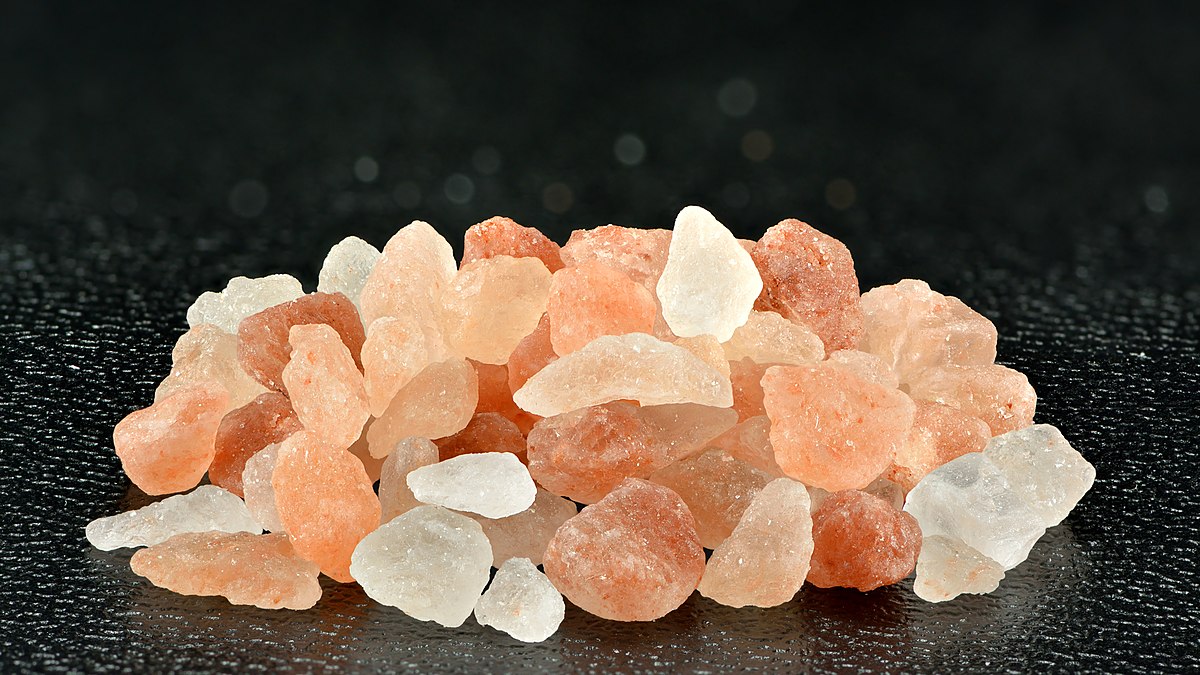
Rock salt, also known as halite, is a mineral form of sodium chloride that is commonly found in nature. Its name is derived from the Greek words "halos" and "lithos," which together mean "salt rock." This naturally occurring substance has a wide range of uses, from culinary applications to industrial processes and even in the realm of alternative medicine. In this article, we will delve into 10 fascinating facts about rock salt, shedding light on its properties, history, and diverse uses. Whether you're a chemistry enthusiast, a culinary aficionado, or simply curious about the world around you, these facts will provide a deeper understanding of this versatile mineral. So, let's embark on a journey to explore the intriguing world of rock salt.
Key Takeaways:
- Rock salt, a form of halite, is used for de-icing roads, water softening, food preservation, and even has therapeutic properties. It’s a versatile mineral with a wide range of practical applications.
- Large underground deposits of rock salt are formed through the evaporation of saline water over millions of years. It’s not just for de-icing roads, but also used in the chemical industry, bath salts, and even in livestock feed.
Rock Salt is a Form of Halite
Rock salt is a naturally occurring mineral form of sodium chloride, commonly known as table salt. It is typically found in massive beds, often from ancient seas and lakes that have long since dried up. The mineral is often mined and then crushed into small grains or used in its larger crystal form.
Rock Salt is Used for De-Icing Roads
One of the most common uses of rock salt is for de-icing roads and highways during winter. When spread on icy roads, it helps to lower the freezing point of water, preventing the formation of ice and making the roads safer for driving.
Rock Salt is Essential for Water Softening
Rock salt is a key component in the process of water softening. It helps to remove the hardness in water by replacing the calcium and magnesium ions with sodium ions, thus making the water suitable for various household uses.
Rock Salt is Used in Food Preservation
Rock salt has been used for centuries as a preservative for various types of food, including meats and fish. Its ability to draw out moisture helps in preserving the food and preventing the growth of microorganisms that cause spoilage.
Rock Salt is Found in Underground Deposits
Large underground deposits of rock salt are found in various parts of the world, including the United States, the United Kingdom, China, and Germany. These deposits are the result of the evaporation of ancient seas and the subsequent compression of the salt over millions of years.
Rock Salt is Used in the Chemical Industry
Rock salt is a vital raw material for the chemical industry. It is used in the production of various chemicals, including chlorine, caustic soda, and other important compounds that are used in manufacturing processes.
Rock Salt has Therapeutic Properties
Rock salt is known for its therapeutic properties and has been used in traditional medicine for its healing effects. It is often used in salt therapy, where the inhalation of salt-infused air is believed to have beneficial effects on respiratory conditions.
Rock Salt is a Common Ingredient in Bath Salts
Rock salt is a popular ingredient in bath salts and exfoliating scrubs. When used in bath water, it can help to relax muscles, soothe skin irritations, and provide a rejuvenating experience for the body and mind.
Rock Salt is Used in Livestock Feed
Rock salt is an essential component of livestock feed. It provides animals with the necessary sodium and chloride for maintaining proper fluid balance, nerve function, and overall health.
Rock Salt is Formed Through Evaporation
The formation of rock salt is a result of the evaporation of saline water. As the water evaporates, it leaves behind the crystallized sodium chloride, which accumulates over time to form extensive salt deposits.
Conclusion
Rock salt, also known as halite, is a fascinating mineral with a wide range of uses and benefits. From its formation in ancient oceans to its modern-day applications in industry and everyday life, rock salt has played a crucial role throughout history. Its natural abundance and versatility make it a valuable resource for various industries, including food, medicine, and de-icing. Understanding the unique properties and historical significance of rock salt can deepen our appreciation for this remarkable mineral.
FAQs
What is rock salt?
Rock salt is a naturally occurring mineral form of sodium chloride, commonly found in underground deposits and sedimentary layers.
How is rock salt formed?
Rock salt is formed through the evaporation of ancient seas and lakes, leaving behind deposits of crystallized salt over millions of years.
What are the main uses of rock salt?
Rock salt is used for de-icing roads, as a seasoning in cooking, in the production of chemicals, and in various industrial processes.
Is rock salt edible?
Yes, rock salt is edible and commonly used as a seasoning for food, especially in preserving and curing meats.
What are the health benefits of rock salt?
Rock salt contains essential minerals such as sodium, potassium, and magnesium, which are beneficial for maintaining electrolyte balance and overall health.
Rock salt's versatility extends beyond de-icing and food preservation. Its therapeutic properties make it a popular ingredient in bath salts, providing relaxation and rejuvenation. For those seeking a natural ambiance in their living spaces, salt lamps offer a unique and soothing glow. Crafted from rock salt crystals, these lamps emit a warm, inviting light that creates a calming atmosphere. Discover the benefits and beauty of incorporating salt lamps into your home decor, and experience the tranquility they bring to any room.
Was this page helpful?
Our commitment to delivering trustworthy and engaging content is at the heart of what we do. Each fact on our site is contributed by real users like you, bringing a wealth of diverse insights and information. To ensure the highest standards of accuracy and reliability, our dedicated editors meticulously review each submission. This process guarantees that the facts we share are not only fascinating but also credible. Trust in our commitment to quality and authenticity as you explore and learn with us.


